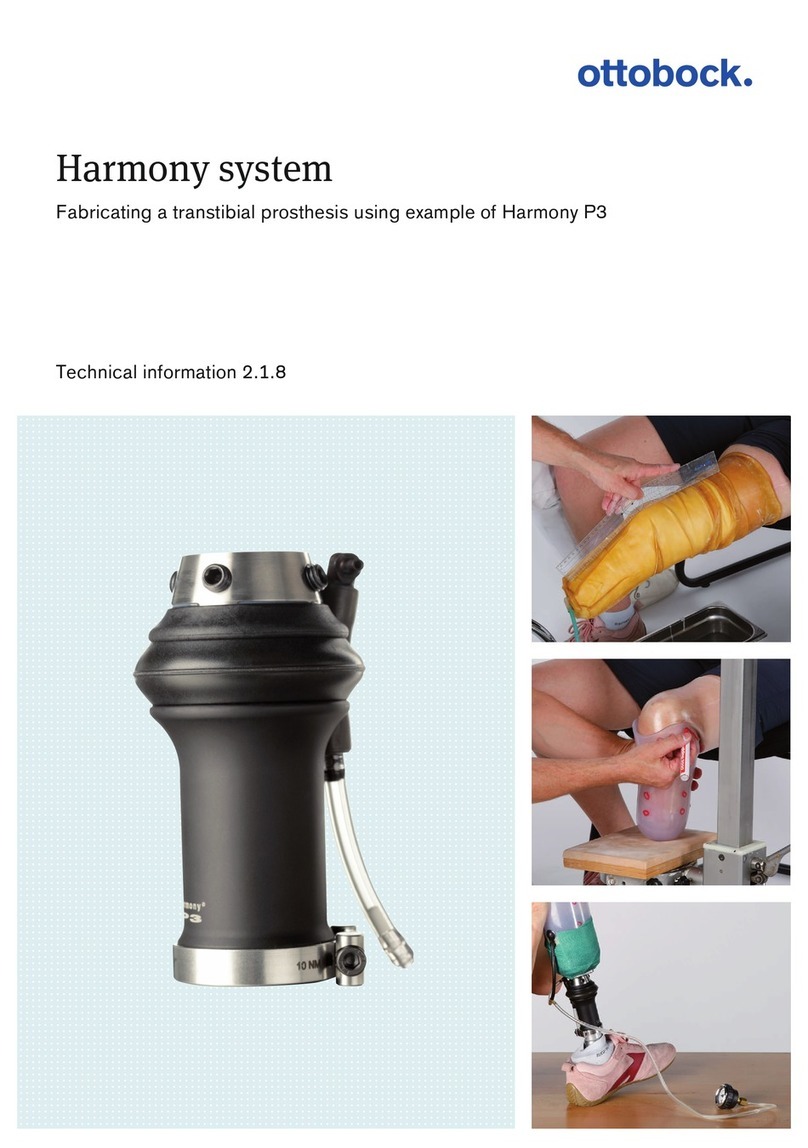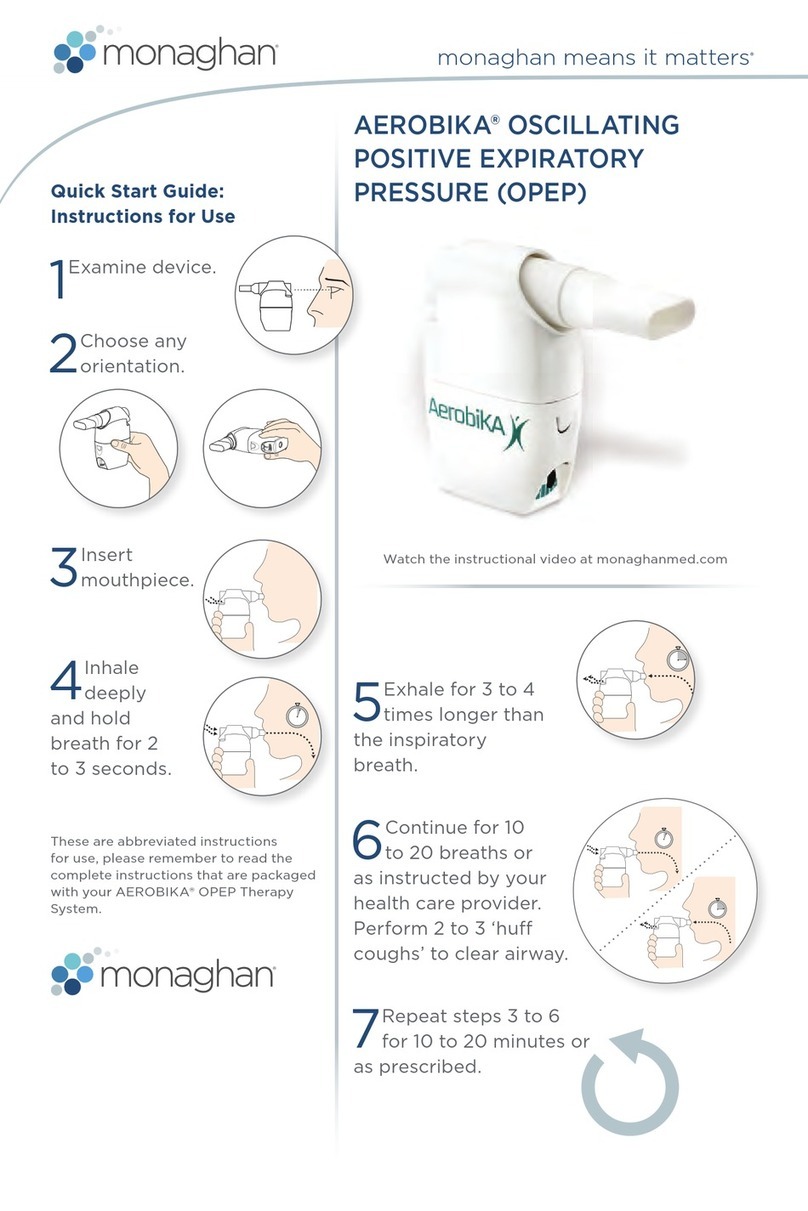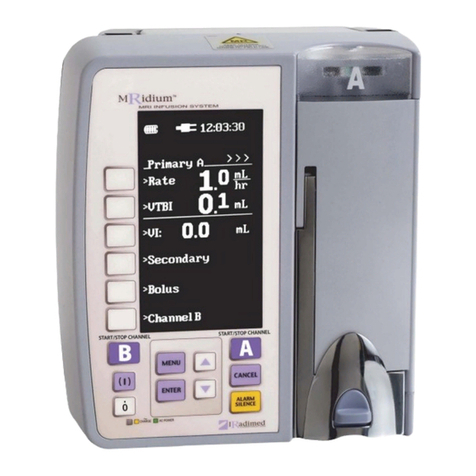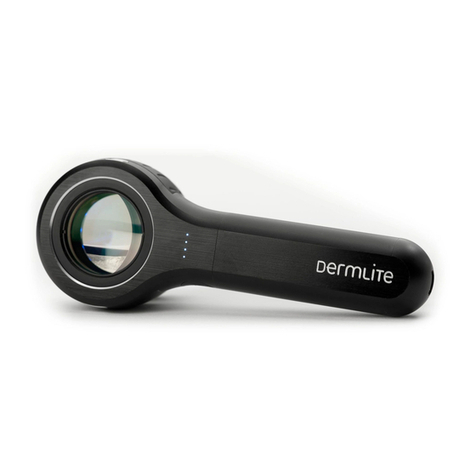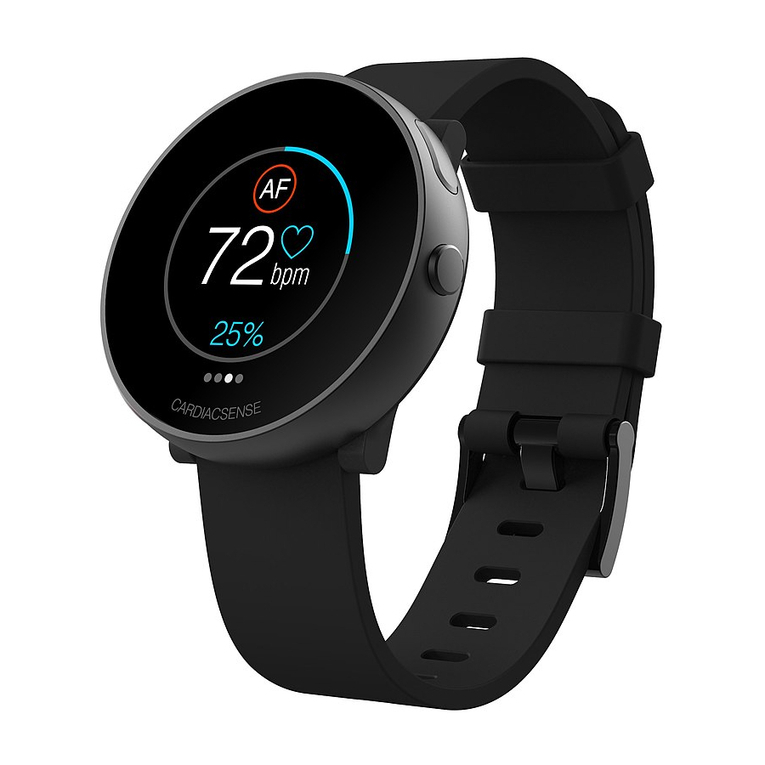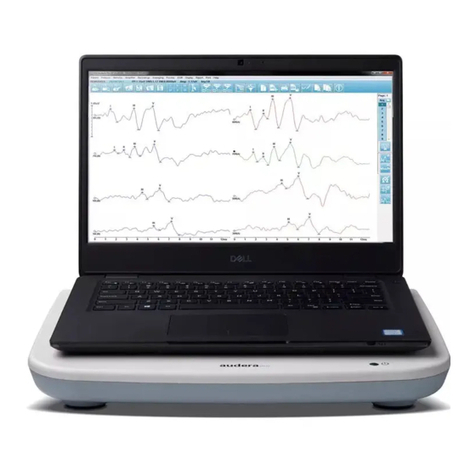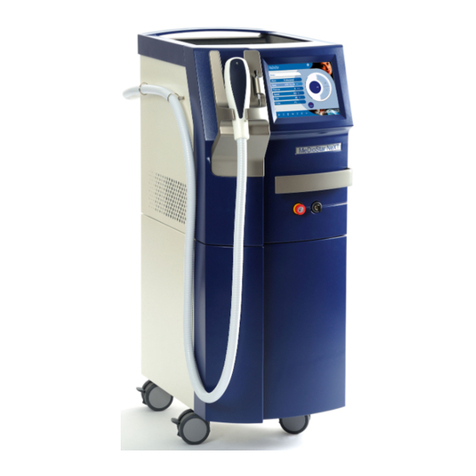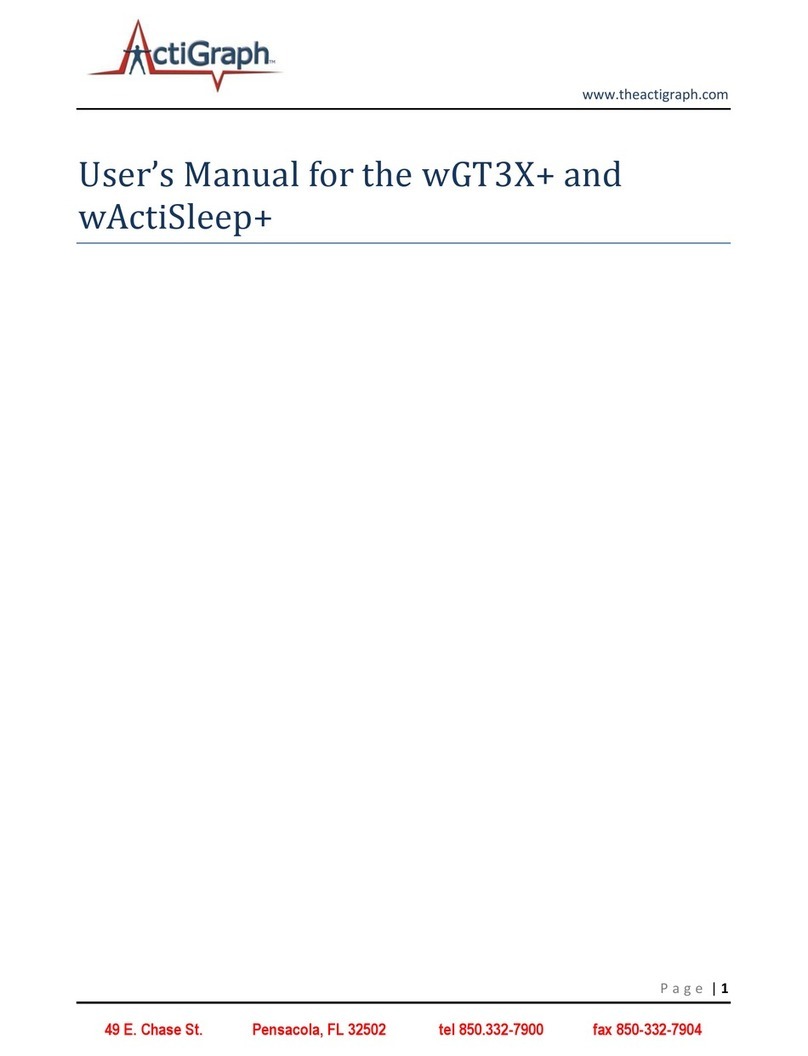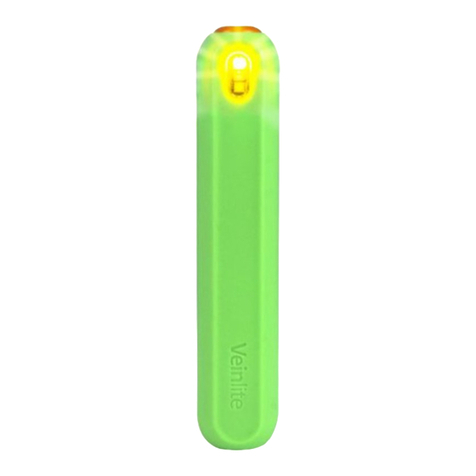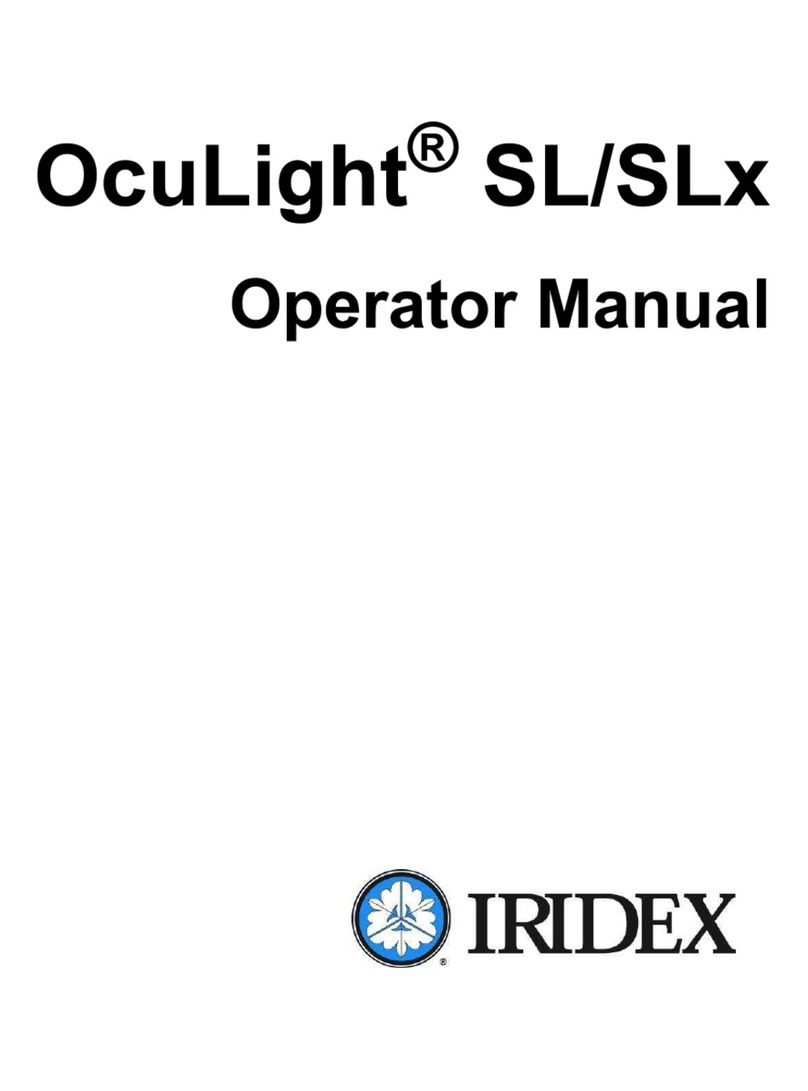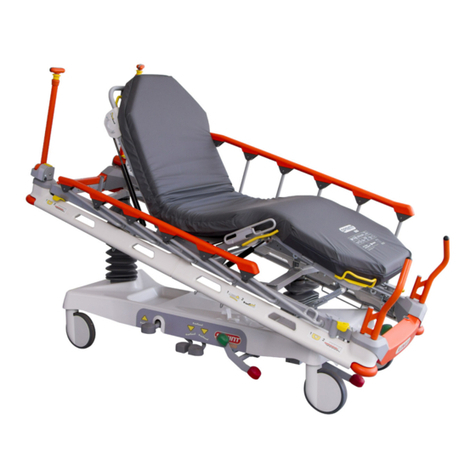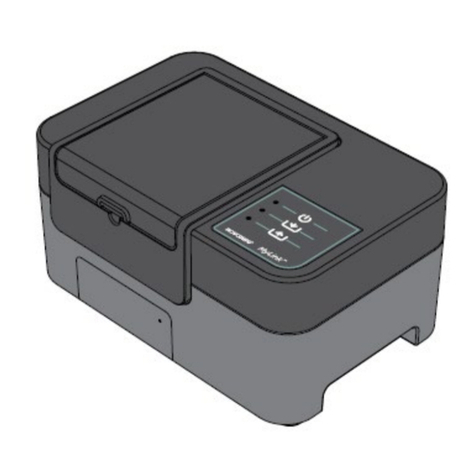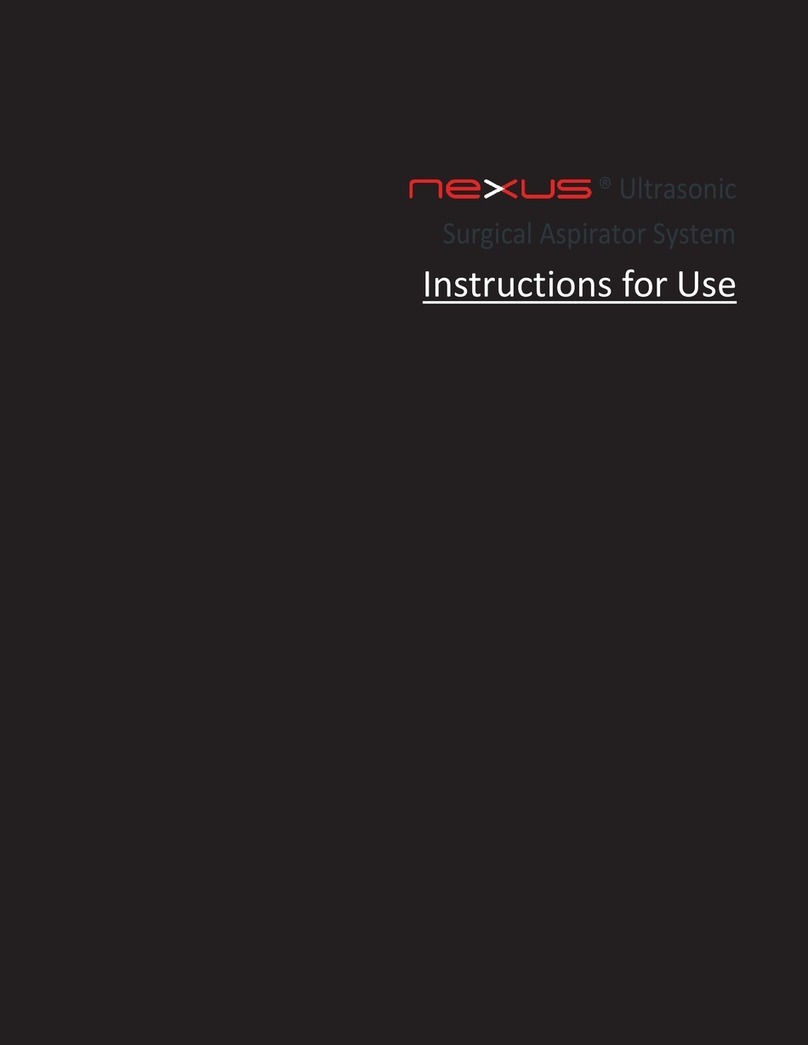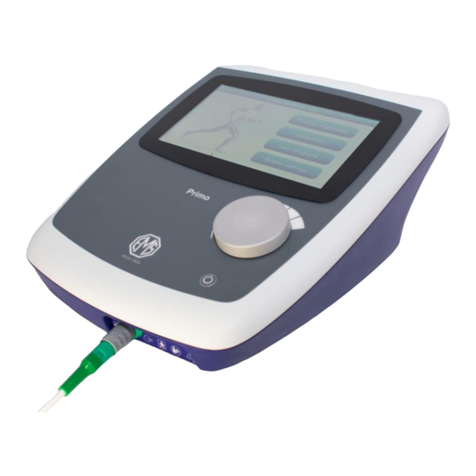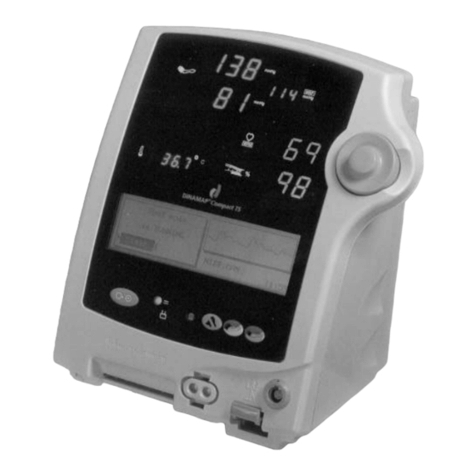Creative OXY-110 Instruction Manual

User Manual for Handheld Pulse Oximeter
I
Instructions to User
Dear Customer,
Thank you for purchasing this quality product. Please read the
manual very carefully before using this device. Failure to follow
these instructions can cause measuring abnormality or damage to
the Oximeter.
No part of this manual may be photocopied, reproduced or
translated into another language without the prior written consent.
We reserve the right to revise and amend it at any time without
prior notice.
Version of the Manual: Ver 1.0
Issued Date: October 28th, 2016
All rights reserved.
Notes:
The contents contained in this manual are subject to change
without prior notice.
Information furnished by Creative is believed to be accurate
and reliable. However, no responsibility is assumed by Creative
for its use, or any infringements of patents or other rights of
third parties that may result from its use.
3502-2290079

User Manual for Handheld Pulse Oximeter
II
Instructions for Safe Operation
Check the device to make sure that there is no visible
damage that may affect user’s safety and measurement
performance. It is recommended that the device should be
inspected minimally before each use. If there is obvious
damage, stop using the device.
Necessary service must be performed only by qualified
technicians. Users are not permitted to service this device.
The oximeter must not be used with the devices and
accessories not specified in User Manual.
Cautions
Explosive hazard—DO NOT use the oximeter in
environment with inflammable gas such as some ignitable
anesthetic agents.
DO NOT use the oximeter while the Patient is under MRI or
CT scanning. This device is NOT MRI Compatible.
Warnings
Discomfort or pain may occur if using the sensor of this
device continuously on the same location for a long time,
especially for the patients with poor microcirculation. It is
recommended that the Oximeter should not be applied to the
same location for longer than 2 hours or less if any
abnormal condition is found. Frequently check and
re-position the Oximeter sensor.
Misapplication of a SpO2probe with excessive pressure for
prolonged periods can induce pressure injury.
Place the SpO2probe on the finger tightly will cause venous
pulse and effect blood circulation, and lead to interstitial
edema, hypoxia and inaccurate measurement.
Biocompatibility tests have been performed on all the
applied parts, some exceptional allergic patients may still

User Manual for Handheld Pulse Oximeter
III
have anaphylaxis. Do not apply to those who have
anaphylaxis.
For the individual patients, there should be a more prudent
inspecting in the placing process. The sensor can not be
placed on the edema and tender tissue.
The local law should be followed when disposing of the
expired device or its accessories.
DO NOT operate in the environment where strong
electro-magnetic interference exists, such as radiogram,
television, radiophone, etc.
Please pay attention to the SpO2probe cable while using to
avoid strangulating patient.
Attentions
Keep the oximeter away from dust, vibration, corrosive
substances, explosive materials, high temperature and
moisture.
If the Oximeter gets wet, please stop operating it and do not
resume operation until it is dry and checked for correct
operation. When it is carried from a cold environment to a
warm and humid environment, please do not use it
immediately. Allow at least 15 minutes for the Oximeter to
reach ambient temperature.
DO NOT operate the button on the front panel with sharp
materials or sharp point.
DO NOT use high temperature or high pressure steam
disinfection on the oximeter and probes. Refer to related
chapter for instructions regarding cleaning and disinfection.
The intended use of this device is not for therapy purpose.
The equipment is IP22 with protection against harmful solid
foreign objects and ingress of liquid. So that means the

User Manual for Handheld Pulse Oximeter
IV
equipment is protected against solid foreign objects of
12.5mm and greater, and protected against vertically falling
water drops when enclosure tilted up to 15°.
Please pay attention to the effects of lint, dust, light
(including sunlight), etc.
Declaration of Conformity
The manufacturer hereby declares that this device complies with
the following standards:
IEC 60601-1:2005+A1: 2012, IEC60601-1-2:2014,
IEC60601-1-11:2010, ISO 80601-2-61:2011 and follows the
provisions of the council directive MDD93/42/EEC.

User Manual for Handheld Pulse Oximeter
V
Table of Contents
1 Overview...................................................................................... 1
1.1 Appearance............................................................................ 1
1.2 Product Name and Model...................................................... 3
1.3 Structure.................................................................................3
1.4 Features..................................................................................4
1.5 Intended Use.......................................................................... 4
1.6 Working Environment........................................................... 4
2 Preparation.................................................................................. 5
2.1 Charger Base Connection...................................................... 5
2.2 Power Supply.........................................................................5
3 Make Measurement.....................................................................7
3.1 SpO2Measurement................................................................ 7
3.2 Temperature Measurement (optional)....................................9
4 Operation................................................................................... 11
4.1 Power on/off the Oximeter.................................................. 11
4.2 Default Display Screen........................................................11
4.3 Menu....................................................................................14
4.4 Record..................................................................................27
5 Technical Specifications............................................................32
6 Over-limit Indication.............................................................. 34
6.1 Limit settings....................................................................... 34
6.2 Over-limit indication sound mute setting............................ 34
7 Packing List............................................................................... 35
8 Repair and Maintenance.......................................................... 36
8.1 Maintenance.........................................................................36
8.2 Cleaning and Disinfecting Instruction.................................36
9 Troubleshooting.........................................................................37
Appendix....................................................................................... 38
Quality Inspection Certificate..................................................... 45

User Manual for Handheld Pulse Oximeter
1
1 Overview
1.1 Appearance
Power/Left
Mute /Right
Display screen
Figure 1.1 Front View
Rotate-lock /Up
Setting/Down
Alert
indicator
Menu/Confirm
Record/Back
Power indicator

User Manual for Handheld Pulse Oximeter
2
1. Display screen: Display measurement result, trends and menus.
2. (Power/Left): Power on/off the device by longtime
pressing; On menu or sub-menu screen, short time press it to move
the cursor left or adjust the parameter values.
3. (Mute/Right): On data recall screen, longtime press this
key, then the delete dialog pops up; On measuring screen, short
time press it to resume or mute the alert sound. On non-alert status,
short time press it to turn on/off beep sound. On menu or sub-menu
screen, short time press it to move the cursor right or adjust the
parameter values.
Note: when the device alert indication is on, short time pressing
will mute the alert sound, the mute state will persist for about 90s.
After this mute period (90s), then the alert sound will resume.
4. (Rotate-lock/Up): On measuring screen, longtime pressing
to enable or disable the automatic screen orientation (on horizontal
or vertical direction); On menu or sub-menu screen, short time
press it to move the cursor upwards or adjust the parameter value.
Figure 1.2 Upper-side view
Figure 1.3 Bottom side view
SpO2:
SpO2 probe
connector
TEMP:
Temperature
probe
connector
DC power
input socket

User Manual for Handheld Pulse Oximeter
3
5. (Setting/Down): On measuring screen, longtime pressing
to enter into setting screen; On menu or sub-menu screen, short
time press it to move the cursor downwards or adjust the parameter
value.
6. (Menu/Confirm): Short time press it to enter into menu
screen, or to confirm the selection.
7. (Record/Back): Short time press it to enter into SpO2
record list screen, or to back to the previous level of menu.
8. (Alert indicator): If the probe is not well placed
or disconnected, or the measured value exceeds the preset alert
limit value, then the alert indicator will keep orange flashing.
9. (Power saving mode indicator): If the device is set as power
saving mode, then the indicator keeps on. And on measuring screen,
the indicator flashes with the pulse beep.
10. Icon: "SpO2"( ): SpO2Probe Connector.
11. Icon: "TEMP"( ): Temperature Probe Connector.
12. (DC power input): used for connecting
external DC power input for charging the built-in rechargeable
battery.
1.2 Product Name and Model
Name: Handheld Pulse Oximeter
Model: SP-20
1.3 Structure
It consists of the main unit and SpO2probe.
(Note: with optional temperature prob, this Oximeter can make
temperature measurement.)

User Manual for Handheld Pulse Oximeter
4
1.4 Features
It is lightweight, small in size and easy to carry
Color LCD to display plethysmogram and parameters
Measure SpO2, Pulse Rate and Temperature simultaneously
PI (Perfusion Index) display is available
Up to 500 hours data storage for SpO2and PR and can be
recalled.
16 user IDs for making data and can be added.
A built-on holder for convenient standing on desktop and
display viewing.
Real-time battery status display and low battery voltage
indication.
Auto power off is available
Audible and visual alert function is available
Data uploading to PC for management (Optional)
Power saving mode is available
1.5 Intended Use
This Handheld Pulse Oximeter is intended for measuring and
recording the pulse rate, functional oxygen saturation (SpO2) and
temperature (optional). It is applicable for detecting SpO2, pulse
rate and temperature of adult and pediatric patients in clinical
institutions and homes.
1.6 Working Environment
Operating temperature: 5~40℃
Operating humidity: 15%~93% (non-condensing)
Atmospheric pressure: 70kPa~106kPa

User Manual for Handheld Pulse Oximeter
5
2 Preparation
2.1 Charger Base Connection
Put the device into the charger
base properly, and note the
polarity markings, as shown in
figure 2.1.
Figure 2.1 Charger base connection
充电底座连接
Oximeter
Charger base

User Manual for Handheld Pulse Oximeter
6
2.2 Power Supply
1. Internal power supply with built-in battery:
Built-in battery specification: 2000mAh lithium battery.
2. External power from the AC power adapter:
Use the AC power adapter provided by the manufacturer. Make
sure the mains power supply is 100-240VAC with 50/60Hz.
3. External power supply from the USB cable:
Use the USB cable with micro-USB connector, connect one end of
the USB cable to the connector on the device marked with
" " or to the USB connector on the charger base marked
with " ", and the other end to the USB power source with
output capacity of 5V DC/1A.
Note: When using the supplied charger base for power supply,
please do not tilt the charger base backwards too much, or the
USB cable and the connector may be damaged.

User Manual for Handheld Pulse Oximeter
7
3 Make Measurement
3.1 SpO2Measurement
Operation procedures:
1. Connect the SpO2probe to the connector on the upper-side of
the device marked with "SpO2". (Note: When disconnecting the
connector, be sure to hold the head of the connector firmly and
pull).
2. The red blinking light inside the clip of the SpO2probe
indicates a successful connection.
3. Insert one finger (index finger is preferred, the nail should be
not too long) into the clip of the probe according to the finger
mark,as shown in figure 3.1.
4. The device will begin to take the measurement, and the
measured result will be displayed on the screen, as shown in figure
4.2.
Figure 3.1 demonstration for SpO2probe
Safety instructions for SpO2measurement
Continuous use of the SpO2probe may result in discomfort or
pain, especially for those with microcirculatory problems. It is

User Manual for Handheld Pulse Oximeter
8
recommended that the probe should NOT be applied to the
same place for over two hours, change the measurement site
periodically and when necessary.
When the ambient temperature is over 35℃, please change
the measuring site every two hours; when the ambient
temperature is over 37℃, please do NOT use the SpO2sensor,
as using in high temperatures can cause burns.
Do NOT place the SpO2probe on a finger with edema or
fragile tissue.
Do NOT put the SpO2probe and pressure cuff on the same
limb, otherwise the blood pressure measurement may affect the
SpO2measurement.
The device is calibrated to display functional oxygen
saturation.
Do NOT allow the sensor cable to twist or bend.
Check the SpO2sensor and cable before use. Do NOT use a
damaged SpO2sensor.
When the temperature of the SpO2sensor is abnormal, do
not use it further.
Remove nail polish or other cosmetic products from the
fingernail.
The fingernail should be of normal length.
The SpO2sensor cannot be immersed into water, liquid or
cleanser.
The SpO2sensor can be repeatedly used. Please clean and
disinfect before reuse.

User Manual for Handheld Pulse Oximeter
9
☞Connector with the label "SpO2" can only be connected with
SpO2probe, and connector with the label "TEMP" can only be
connected with the temperature probe.
3.2 Temperature Measurement (optional)
The infrared temperature probe is a delicate transducer. To operate
please follow these steps and procedures. Failure to accurately
operate may cause damage to the probe.
The infrared temperature probe is as shown in figure 3.2.
Please place the infrared temperature probe in a stable ambient
temperature for 30 minutes before taking a measurement.
Operation procedure:
1. Connect the infrared temperature probe to the connector on the
upper side of device marked with "TEMP".
2. When the screen shows as the big display screen in figure 3.2
Small screen
Measuring tip of
temperature probe
Measuring key
Figure 3.2 the infrared temperature probe
Power on/off key
Temperature
Probe Cover
Battery cover
Big display screen

User Manual for Handheld Pulse Oximeter
10
and the temperature unit " ℃" is blinking, the user can begin to
take the measurement.
3. Insert the tip of the temperature probe into the earhole and
press the measuring key to start the measurement. A short beep
means the measurement has finished and the result will be
displayed on the big display screen on temperature probe and
the display screen of the Oximeter.
Note:
If the temperature probe detects a hardware failure, the display
screen on the infrared temperature probe will show "Err" and
will not enter into measurement mode.
The infrared temperature probe will switch to standby state
automatically if there is no operation for 1 minute. If a further
measurement is needed, press the measuring key and repeat
step 2 and step 3.
Normal body temperature varies depending on the position/area
the measurement is taken from. The following table shows the
varying temperature ranges of the different body positions.
Temperature varying range at different body positions:
Arm
34.7 ~ 37.3 ℃
Oral
35.5 ~ 37.5 ℃
Rectal
36.6 ~ 38.0 ℃
Ear
35.8 ~ 38.0 ℃
Safety Instruction for Temperature Measurement
Do NOT take a measurement when the patient is moving.
Patients with tympanitis or otitis problems should NOT use
this device.
When the infrared temperature probe is connected to the
device, the probe will consequently be at power-on status,

User Manual for Handheld Pulse Oximeter
11
therefore pressing the power on/off key on the temperature
probe will not cause any effect.
4 Operation
4.1 Power on/off the Oximeter
Long pressing" " Power/Left key for 1~2 seconds, then
the oximeter will be powered on. The oximeter will do
self-test and then show the software version, as shown in
figure 4.1 (refer to your oximeter for actual version).
Figure 4.1
4.2 Default Display Screen
Press “ ”power key for 2 seconds to start up the Oximeter, then
the screen will display the default screen, as shown in Figure 4.2.

User Manual for Handheld Pulse Oximeter
12
Description:
During measurement, if the finger is not inserted properly, or
the probe is not connected or the probe is off from the finger,
then "Check Probe" message prompts on the screen, and
"bibibi..." alert sound appears simultaneously. Alert sound is
SpO2mark
SpO2value
Pulse
Plethysmogram
Current time
SpO2high/low
limit setting range
Patient type
Sound indicator
Battery indicator
Pulse rate
mark and unit
Pulse Strength
bar-graph
Pulse symbol
Pulse rate value
Figure 4.2A Default Display Screen---in vertical
HR high/low limit
setting range
User ID
Measurement mode
Auto power off disable icon
Wireless icon
Rotate-lock icon
TEMP value
Perfusion index

User Manual for Handheld Pulse Oximeter
13
sustaining for about 3 minutes, and if there is no any key
operation in this period, then the device will power off
automatically (if the auto power off function is turned on).
During measurement, longtime pressing Rotate-lock/Up key
" ", then the Rotate-lock icon " " turns to blue " ",
it means the auto rotation function is turned on, if you place
this oximeter horizontally, then the display shows in
horizontal, as shown in figure 4.2B.
Sound indicator " " means the device is on mute status,
the user can turn on the indication sound by short pressing
" " key. Short time press " " key can turn off (or
resume) the device sound (including pulse beep sound,
audible alert and key click), while the pulse symbol " " still
Figure 4.2B Default Display Screen---in horizontal

User Manual for Handheld Pulse Oximeter
14
blinks. During the measurement, over-limit event or probe
off event can activate the alert indication sound. Refer to
Section 6.2 for detailed alert indication sound.
If the memory is full, the corresponding memory full icon
appears on the screen, " " means temperature memory is
full, " " means SpO2spot-check record memory is full,
" " means SpO2continuous record memory is full. No
display of the icon means the current corresponding storing
space is not full. If the memory is full, the data storing will
continue in such way the new record will overwrite the
oldest record, so that it's recommended to upload the stored
data into the computer in time.
4.3 Menu
On the default measuring screen, short time press " "
Menu/Confirm key for entering into main menu screen (as shown
in Figure 4.3).
There are 9 functional icons in main menu screen, press
Up/Down/Left/Right key can move the cursor to make selection
and press " " Menu/Confirm key again to confirm the
selection.
User ID: Add new or edit the current User ID.
User: Select patient type, "Adult" and "Pediatric" for option.

User Manual for Handheld Pulse Oximeter
15
Note: when the device is connecting the neonate SpO2probe, then
the User icon " " turns to grey " ", and the patient type on
upper left corner turns to pink " ".
Measurement mode: Select the measurement mode,
"Spot-check mode" and "Continuous mode" for option.
SpO2record: Recall and review the records stored on the
oximeter, two method for option: "Spot-check Record" and
"Continuous Record", see Section 4.4 for details.
Figure 4.3 Main menu
Table of contents
Other Creative Medical Equipment manuals

Creative
Creative PC-60NW User manual
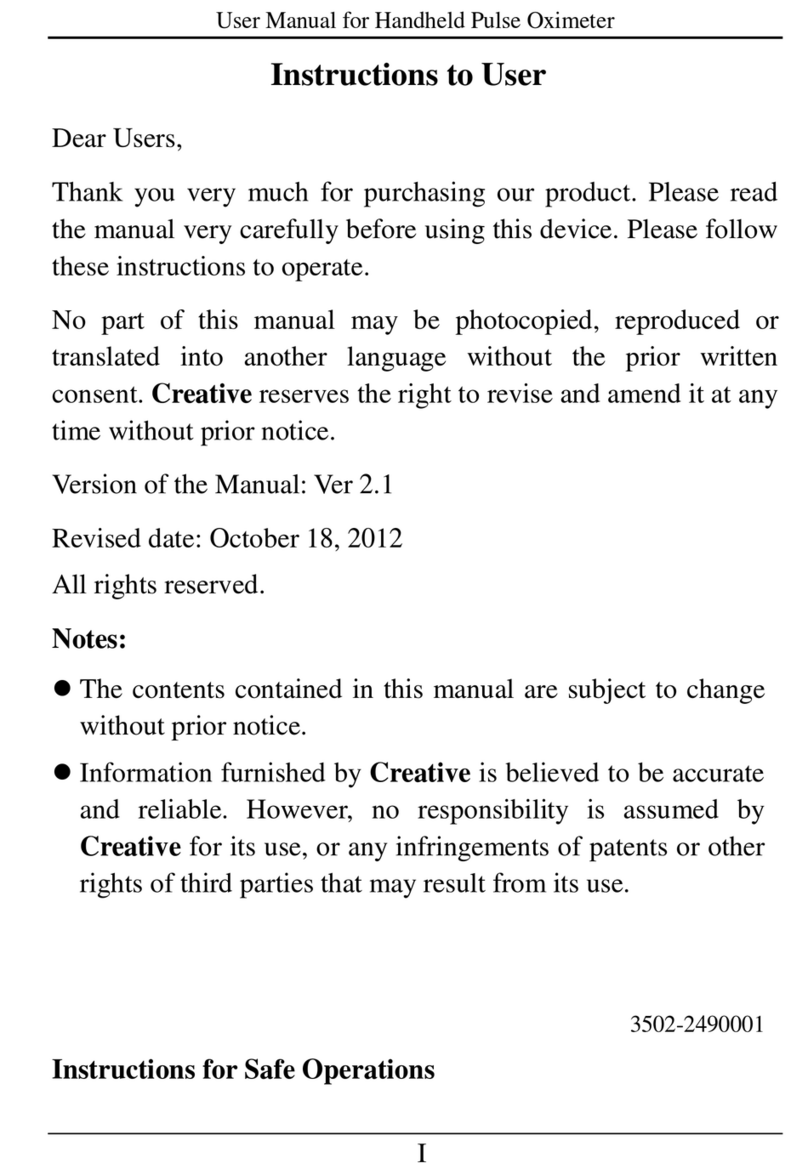
Creative
Creative PC 66B Instruction Manual
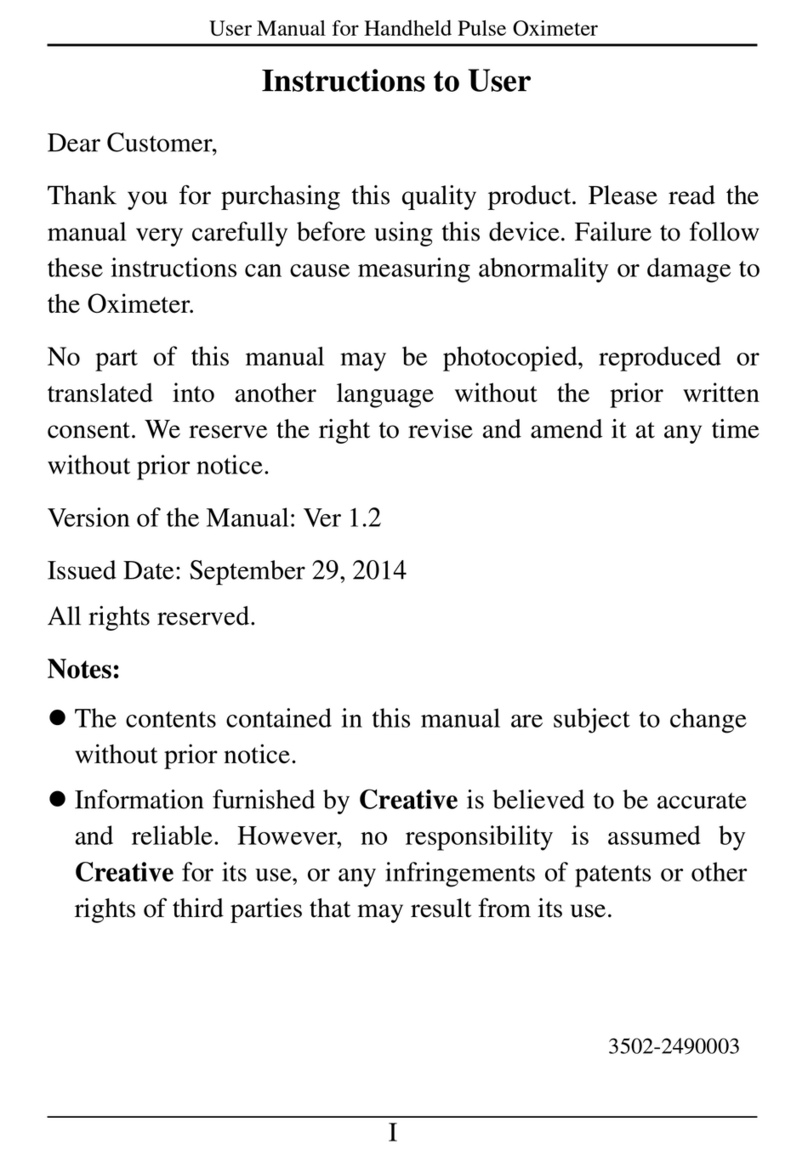
Creative
Creative PC 66B User manual
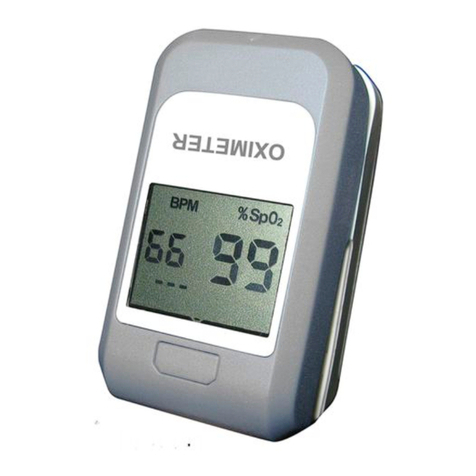
Creative
Creative POD-1 User manual
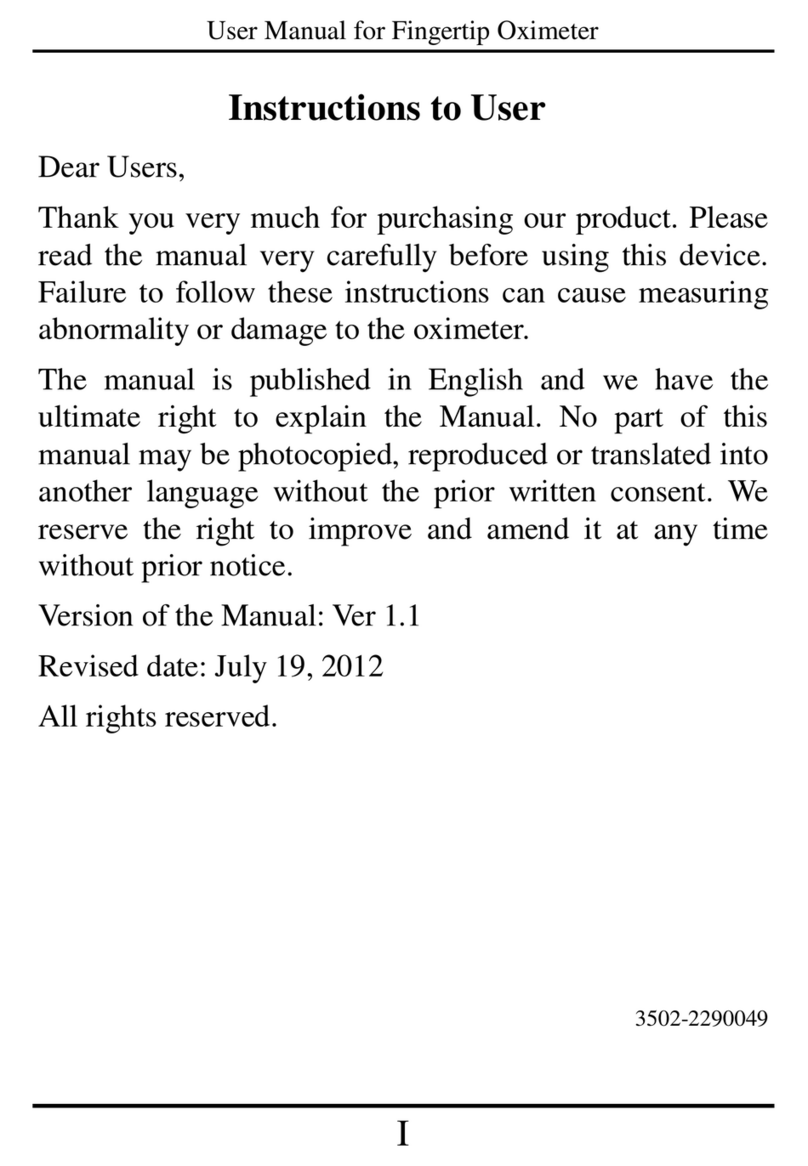
Creative
Creative PC-60N User manual

Creative
Creative PC-68B User manual
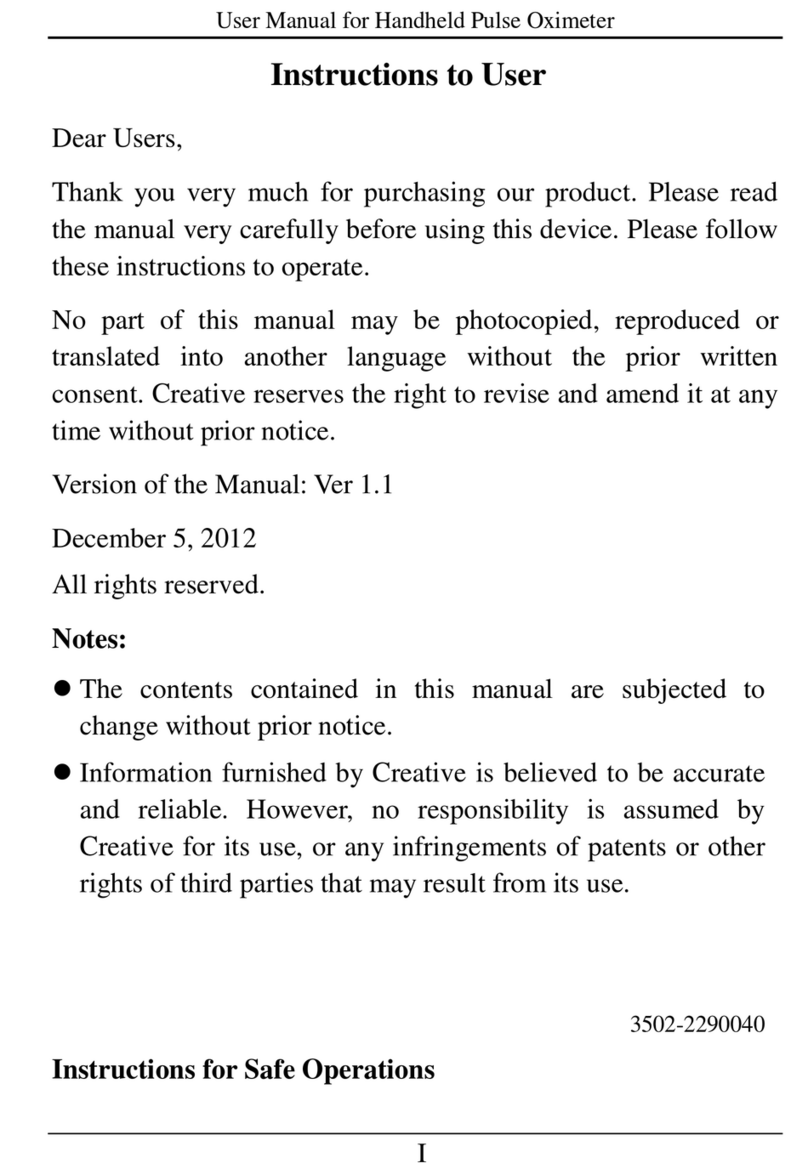
Creative
Creative PC-66A User manual
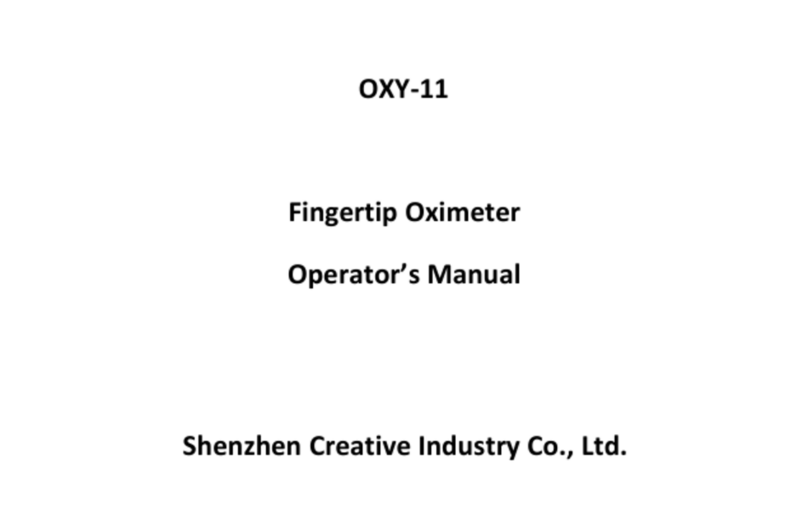
Creative
Creative OXY-11 User manual
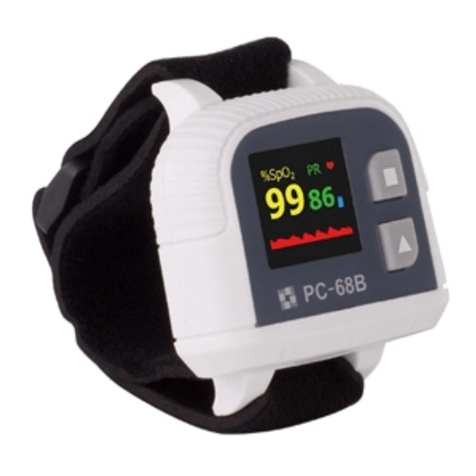
Creative
Creative PC-68A Instruction Manual

Creative
Creative PC-60NW-1 User manual
